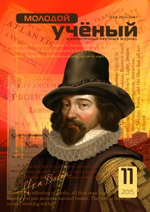Language is the most important mean in the communication and conversation process of people with each other. This conversation is implemented both oral and written form. People who speak the same language can communicate each other without any other means but it is problematic for people with different languages. Translation plays an important role in solving such kind of problems. The necessity and requirement for translators and their duties are becoming more essential issue.
The significance of translation is, and would remain for many years, very high. A literary work created in one language, any scientific invention, their translation and the changes during the translation cause two contrary opinions among scientists. Some specialists say that translation is the rendering the words from one language into another and it can’t express the feelings and main aim of the author. On the contrary, others say that a perfect language can express the full meaning of any creative work written in another language.
According to the opinions given above I am going to emphasize the translation of literary works and some difficulties met during the translation process. The three following ways are widely used in the translation of literary works.
1. Word for word translation. This way is the kind of translating the text without any changes from semantic or logical sides. It often serves as a base in expressing the topic more widely.
2. Logical translation. This way is used for opening the idea of the source text. This kind of translation widely uses the lexical and syntactic changes in the language and delivers the feelings and emotions to the reader.
3. Literary translation. This kind of translation way demands being creative together with translating skill. In consequence, this way is causing many arguments and contrasts of opinions in science.
One of the most often met difficulties in translation is that the source and target languages belong to different cultures. For instance, works which are written in Arabic are full of sacred pieces taken from the Koran and their translation and meaning may be difficult to understand for people of other religion. As a result, understanding different cultures becomes more difficult than understanding different languages. Another difficulty is the translation of the text which describes the traditions belonging to some nation or a certain area. Let’s take the “kidnapping girl” tradition of Kazakh people as an example. This is an ordinary situation for Kazakh people, but for the people of other nations it may be regarded as breaking human rights or out-of-date custom. Also, the words or terms belonging to a certain nation or area may have no equivalent in another language. In the cases like this the translator should give definition to these words.
As it is seen the syntactic ways of two languages can’t always suit with each other. In the word for word translation of the text the syntactic norms of the language are broken. As a result of this the meanings in source and translated texts are sometimes different from each other. The language of the author and his aim are definite, but the expressing way is unfamiliar for the target language. A translator should deliver the feelings and emotions of the author and characters by using necessary methods of literature.
The following methods are used in the editing process of some texts in literary translation.
- Epithets are translated considering the described word and its usage by the structure and semantic peculiarities;
- Comparisons are translated considering the stylistic diversity of the text;
- Metaphors are translated semantically considering the interactions among the characters;
- Neologisms are translated by using new, modern words keeping the original meaning;
- Irony is translated by comparing the incomparable words in the contrast way;
- Topology and sensible names — the names of places and people are translated by keeping the meaning in order to make impression on readers.
- The syntactic peculiarity of the source text: — it is considered an appropriate way of translation joining short sentences into one long, and dividing long sentences into short meaningful ones.
- The language of dialect is mainly expressed by the words and phrases which exist on the target language.
Any translation work should indicate the skill and peculiarity of the translator. Therefore, the main duty of the translator is trying to create the perfect translation of the work by using all the skill and methods existing in the language.
Certainly, alternations, omissions and additions are used in any translation. Even in in any perfect translation work the difference from the source text is visible. The amount of these diversities shows the quality of the translation.
Literary translation is such kind of art which requires creativeness and writing skills from the translator. The translator always works on his language and method as a writer, watches the changes in language and serves as a bridge in the awareness of readers from world literature.
References:
1. Dakowska M. 2005 Teaching English as a foreign language. A guide for professionals. Warsaw, Poland
2. Саленко О. Ю. Проблемы художественного перевода художественного произведения. — bestreferat.ru/referat-97160.html
3. Алтайбаева Д. Ю. Мир перевода. — Лотос-Астана, 2008
4. Казакова Т. А. Практикум по художественному переводу. — Спб: Союз.







